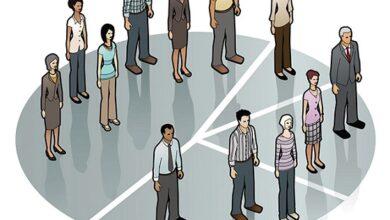Application of gamification/10 Game Mechanics with Examples
In recent years, large companies around the world have incorporated gamification into multiple processes to achieve both internal and external objectives, which has turned this practice into a global trend. In this article we will elaborate the application of gamification.
How can you apply gamification in your company?
Gamification in a company is based on applying the mechanics and dynamics of games to the work context and day-to-day work functions, with the purpose of promoting the motivation and involvement of employees with the contents of the organization.
It is precisely these game mechanics that provide motivating and challenging user experiences, since they awaken values such as competitiveness, excellence, recognition and reward.
If you ask yourself, how can I change inefficient or boring processes? o How can I motivate employees regarding a relevant issue in the organization? With the following 10 game mechanics in gamification, you will have an idea of how to turn your regular content and activities into a game for your employees, and start reaping the benefits of this trend.
1. Define the bases of the game
As the main rule of any game, the first thing to do is define the bases and their purpose, since the focus, strategies and content will depend on this.
You must analyze and define:
- What problem, or what area do you want to improve with the game
- What values do you want to promote?
- What quantitative or qualitative objectives do you want to achieve?
- Awards in the form of recognition or gifts
- Context in which we place it
The first thing will be to define what we want to use the game for, for example, the gamification app for companies , it can be applied to multiple areas such as the training of new incorporations, training of salespeople, informing about the launch of a new product, among others. other functions.
2. Game environment
The purpose of implementing gamification is to innovate, to do something different, and above all that the activity is not perceived as an ”obligation” or work”. For this reason we must set the activity with all the possible elements commonly present in games:
Screenshot of the gamification app for companies
- Narratives or themes
- avatars
- team division
- player profiles
- sounds or music
A clear example is the Christmas season, the arrival of summer or any other relevant moment or stage in the industry, where the company, taking advantage of this theme, develops a game using elements such as messages, prizes and dynamics inspired by that occasion, to motivate employees to participate and improve some specific indicator.
3. Establish a scoring scheme
Points and scoring schemes are essential. It is what we all want to achieve, the more the better, since it is the element that allows us to achieve everything that the game proposes:
- a global position
- The chance to win prizes
- The recognition of achieving a status, etc.
In this app the score will always depend on the questions that are answered correctly. This is a good strategy that facilitates learning, since it motivates employees to understand the organization’s content as well as possible in order to win.
4. Create missions or challenges
The missions or challenges are specific actions within the game, which are intended to generate a feeling of constant challenge, with small victories or defeats that keep entertainment and motivation.
One of the most successful modes is the game that consists of accumulating points by winning challenges made to other teammates, or challenges received by others:
- The use of challenges between players encourages individual competitiveness.
- The use of collective challenges promotes collaboration and teamwork.
5. Set awards or recognition
Every game has a purpose and the participants must feel that they are playing and competing for something. Tangible rewards, in the form of gifts, or virtual prizes in the form of recognition (The champion, the number 1, the MVP).
It is important that, when defining prizes and awards, they are awarded to as many players as possible. The reason is simple: if you deliver only one prize, the participants who are not in the first positions may be discouraged when they see that they will not be able to reach it and will stop playing. By setting prizes for the top 5 or 10 (or even more), you create more chances of getting them and increase motivation.
6. Use levels, achievements, goals, milestones, badges
These are key elements to maintain motivation and competitiveness throughout a game. The idea is to get the vast majority of employees involved and active.
If a player sees that they can level up, reach a goal, earn a badge or complete an achievement, this will be a highly motivating element and will encourage them to continue participating. Evolution and progress are very interesting and motivating elements in any game.
7. Power Urgency and Scarcity
This is a classic game mechanic whose purpose is to always keep players on the lookout, active and involved, since it allows you to create a constant game system, for example:
- Set a time limit to complete an action
- ”You have X hours, days or seconds to respond”
- Communicate that “There are few prizes left”
- Reward for completing an action on time
- Penalize for not completing a challenge
These types of dynamics create a “need” or urgency that will keep players motivated and active.
8. Create Smart Rankings, ratings, leaderboards
A score table should never be missing to motivate the participants and observe the results. But to achieve success we must go beyond just showing who is in the top positions. The key to maintaining engagement is making players compare themselves to each other :
- Make the process of the players visible.
- That the participants can see who is reaching them.
- How many points do I need to beat the next
- How many positions am I from the leader or even from another person of interest.
9. Appeal to Pride and Generate Admiration
A very common and successful element in current video games is to show the “achievements” or achievements obtained by the player.
- Level of Experience
- Achievements obtained
- Challenges achieved
- Awards won
It is motivating and invites you to continue participating, to be able to look back to feel proud of everything that has been achieved so far and to see that there are still challenges to be conquered.
Since others also achieve achievements, allowing transparent visibility to all players will increase the feeling of admiration for what others have achieved and motivate players to continue moving forward to achieve what others have not been able to.
10. Create Team Games
Team games can be very powerful because:
- They encourage collaboration
- Create unity among employees
- It makes it easier to form multidisciplinary teams to learn what others are doing and improve the relationship between different areas.
- Allows the identification of leaders.




